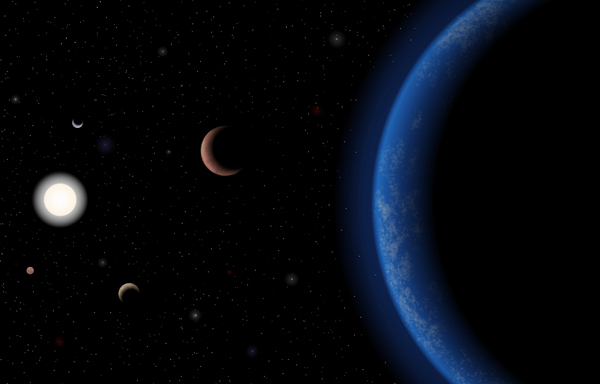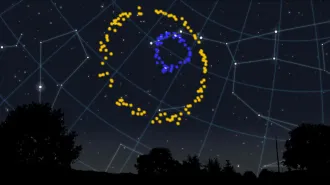- More than 2 years ago
The closest single star like the sun — Tau Ceti, 12 light-years away — may harbor five planets slightly more massive than Earth. One may even lie in the star’s habitable zone.

Mikko Tuomi, of the University of Hertfordshire in England, and his colleagues examined data taken by telescopes in Chile, Hawaii and Australia that looks for wobbles in a star’s movement that could be due to planets’ gravitational tug. Tuomi’s team ran statistical analyses to tease out possible planetary signals from background noise.
According to the analysis, Tau Ceti is surrounded by five planets that weigh between two and six Earth masses and take between 14 and 640 days to orbit the star. The one reported in the habitable zone is a five-Earth-mass planet with a period of 168 days.
Other astronomers say the method of pulling faint planetary signals out of background noise needs to be verified. The work will appear in Astronomy & Astrophysics.







